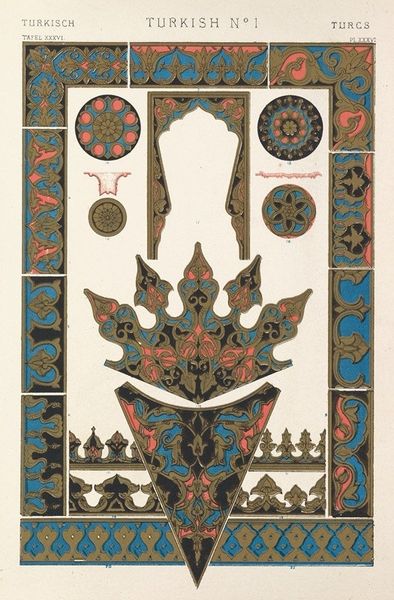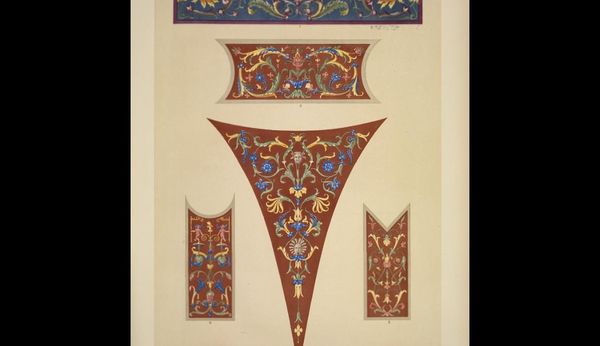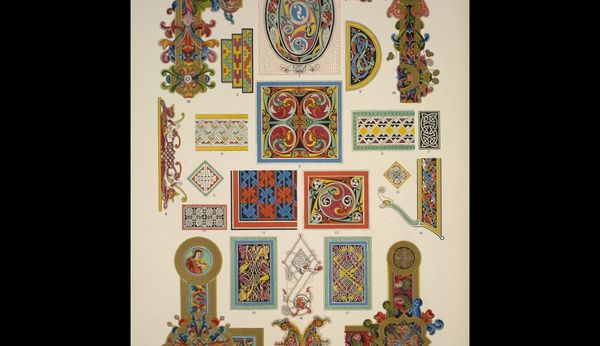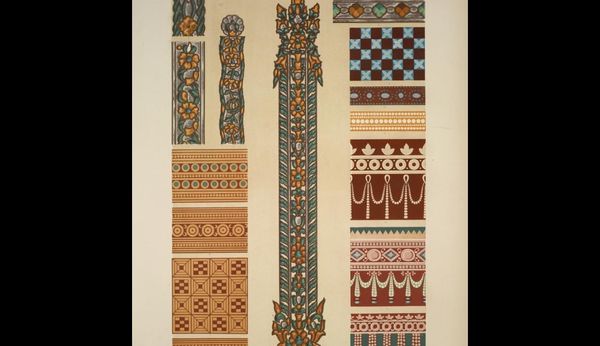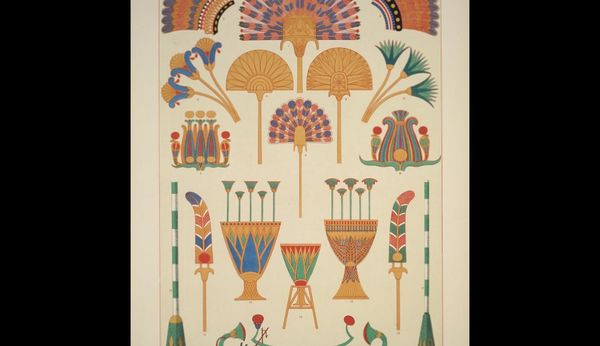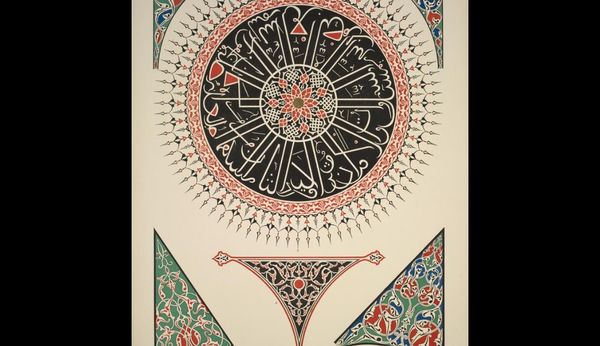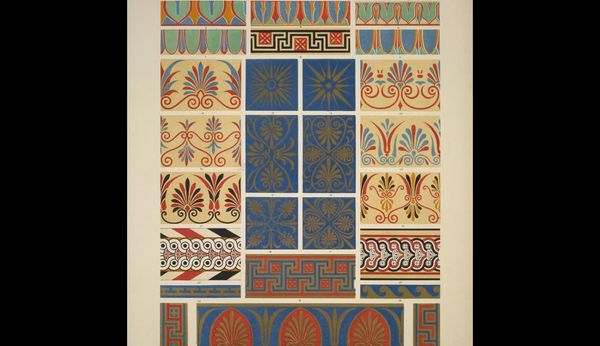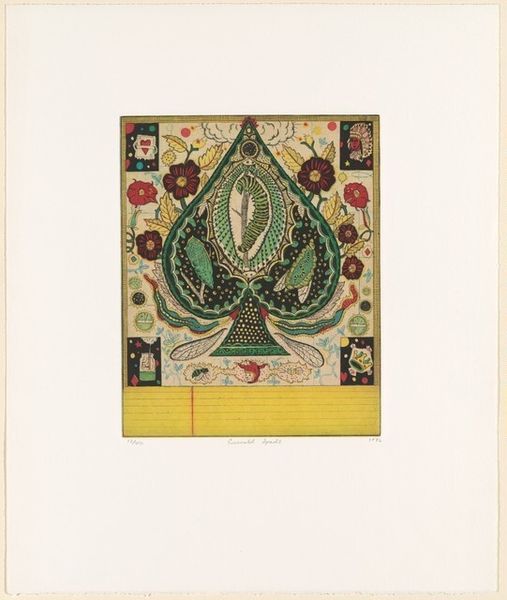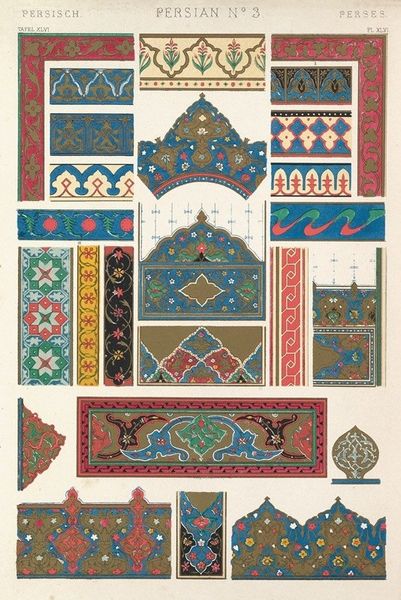
Turkish no. 1. Ornaments in relief from mosques, tombs and fountains in Constantinople
0:00
0:00
textile
#
natural stone pattern
#
loose pattern
#
man-made pattern
#
pattern
#
textile
#
text
#
geometric pattern
#
tile art
#
abstract pattern
#
ethnic pattern
#
geometric
#
vertical pattern
#
pattern repetition
#
islamic-art
#
decorative-art
#
layered pattern
Copyright: Public domain
Owen Jones made this print of relief ornaments from Constantinople using chromolithography, a technique that allowed for the cheap reproduction of colourful images, during the nineteenth century. Jones presents various motifs commonly found in the mosques, tombs, and fountains of Constantinople. Look at the patterns he meticulously recorded. They include geometric shapes, stylized floral designs, and intricate arabesques, reflecting the rich artistic traditions of the Ottoman Empire. In his own time, Jones was a design reformer and proponent of the idea that art can be useful. This print was meant to educate westerners about Islamic design. Today, historians might ask, what are the politics of looking? How do Europeans represent and understand other cultures? What is the relationship between the act of recording and knowing? To answer such questions, we might look to travel writing, colonial records, and museum archives. The meaning of art always depends on context.
Comments
No comments
Be the first to comment and join the conversation on the ultimate creative platform.
